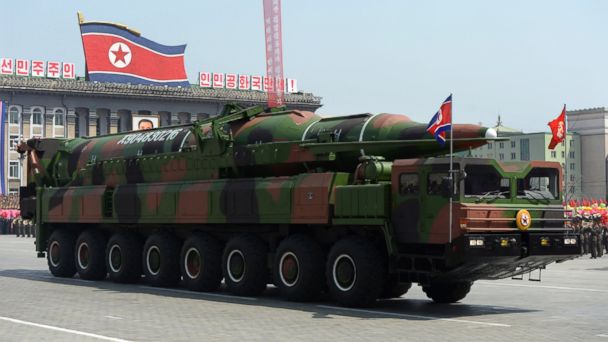(NationalSecurity.news) North Korea is expected to conduct several more missile launches in the coming weeks in the lead-up to the 7th Workers Party Congress, say analysts, in a bid to shore up support for the regime and to make it appear strong before the event.
As reported by Defense One, the North’s launch of five missiles in to the sea earlier this week was also a demonstration of new capability, in what is being called a “modest advancement” in ballistic missile technology. The five KN-09 missiles flew for about 120 miles.
“These missiles are new,” Bruce Bennett, a senior defense analyst with the RAND Corporation, told the site. “They started testing them about a year ago.” Bennett added that they were a “particular threat to bases in South Korea.”
The slightly farther range of the KN-09’s were some cause for concern, Bennett noted. “Historically, the concept has been that North Korea couldn’t reach beyond Seoul with other than its big ballistic missiles and therefore the threat to U.S. airbases in the South was more limited,” he said.
Bennett believes that the North’s provocative actions are likely to continue until at least May, when the Worker’s Party Congress is held – the first such event since 1980 which may be sign that the party is heading in a new direction under current leader Kim Jong-un.
The launches on Monday followed the launch last week of two larger Nodong missiles from a mobile launcher, an indication that the North is building a missile force that cannot be easily located and destroyed.
The South Korean news agency Yonghap reported that one of the Nodong ballistic missiles flew 500 miles before falling into the sea, but the second disappeared quickly from radar screens, indicating it likely blew up shortly after launch.
Monday’s launch of the KN-09 missiles also had mixed success.
“The [KN-09] launcher that fires this missile carries eight missiles,” Bennett told Defense One. “When they last fired, we saw six of the missiles work. That means two didn’t. This time we saw five missiles fly. That means three didn’t. This is a development program, but they’re having firing issues associated with this missile system. The ones that did fire, we have no idea how accurate they would be, because they’re going into the ocean.”
Meanwhile the North’s larger missiles like the Taepodong-2, which has a range in excess of 2,000 miles and the capability of carrying a nuclear warhead should Pyongyang develop one, are very visible targets. And while the KN-09 is not the most dangerous missile in existence, t could nonetheless “cause some significant damage to a U.S. airbase in South Korea if they launch against it,” Bennett added.
See also:
NationalSecurity.news is part of the USA Features Media network.


